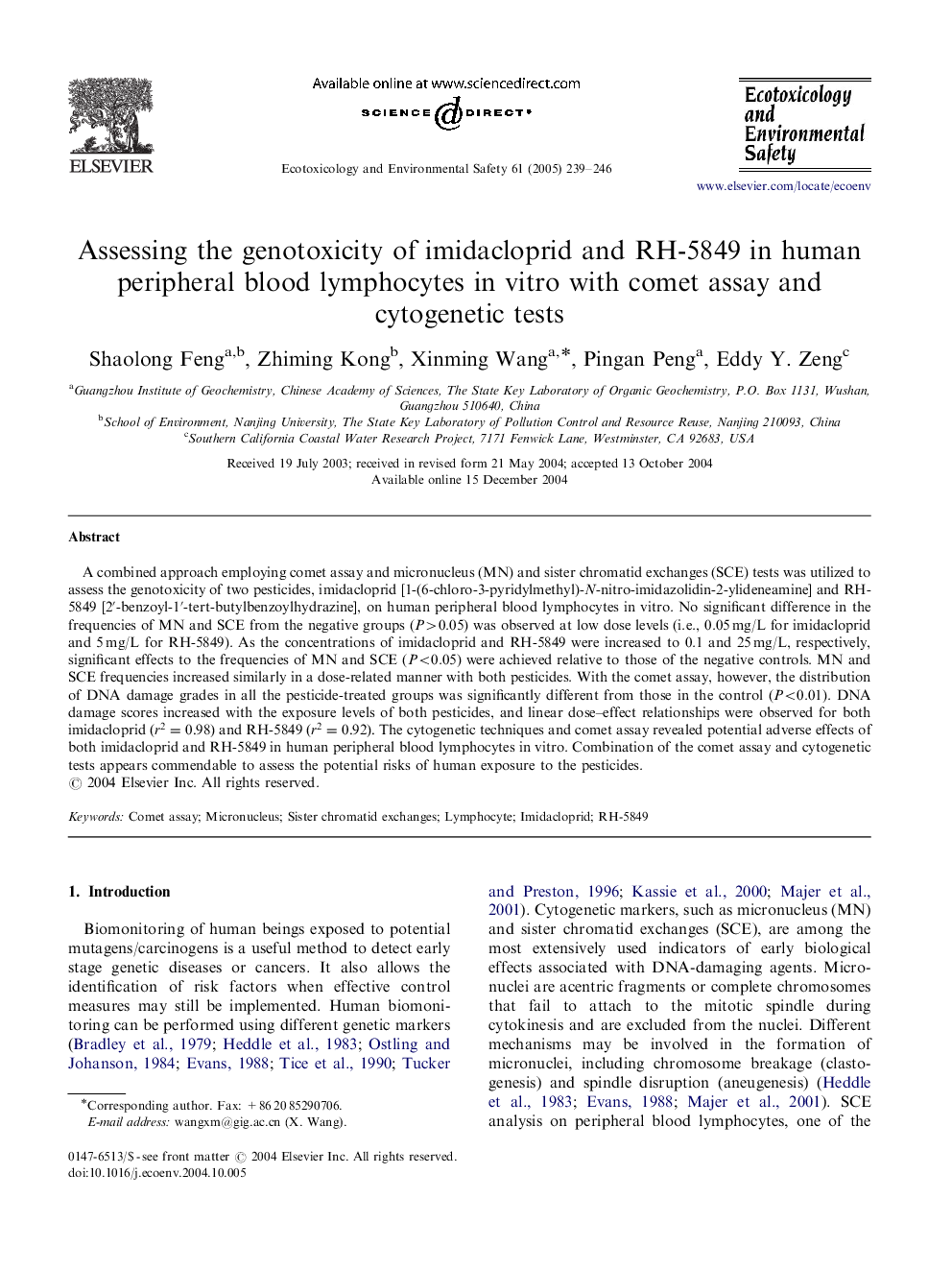| Article ID | Journal | Published Year | Pages | File Type |
|---|---|---|---|---|
| 9454860 | Ecotoxicology and Environmental Safety | 2005 | 8 Pages |
Abstract
A combined approach employing comet assay and micronucleus (MN) and sister chromatid exchanges (SCE) tests was utilized to assess the genotoxicity of two pesticides, imidacloprid [1-(6-chloro-3-pyridylmethyl)-N-nitro-imidazolidin-2-ylideneamine] and RH-5849 [2â²-benzoyl-1â²-tert-butylbenzoylhydrazine], on human peripheral blood lymphocytes in vitro. No significant difference in the frequencies of MN and SCE from the negative groups (P>0.05) was observed at low dose levels (i.e., 0.05Â mg/L for imidacloprid and 5Â mg/L for RH-5849). As the concentrations of imidacloprid and RH-5849 were increased to 0.1 and 25Â mg/L, respectively, significant effects to the frequencies of MN and SCE (P<0.05) were achieved relative to those of the negative controls. MN and SCE frequencies increased similarly in a dose-related manner with both pesticides. With the comet assay, however, the distribution of DNA damage grades in all the pesticide-treated groups was significantly different from those in the control (P<0.01). DNA damage scores increased with the exposure levels of both pesticides, and linear dose-effect relationships were observed for both imidacloprid (r2=0.98) and RH-5849 (r2=0.92). The cytogenetic techniques and comet assay revealed potential adverse effects of both imidacloprid and RH-5849 in human peripheral blood lymphocytes in vitro. Combination of the comet assay and cytogenetic tests appears commendable to assess the potential risks of human exposure to the pesticides.
Related Topics
Life Sciences
Environmental Science
Environmental Chemistry
Authors
Shaolong Feng, Zhiming Kong, Xinming Wang, Pingan Peng, Eddy Y. Zeng,
